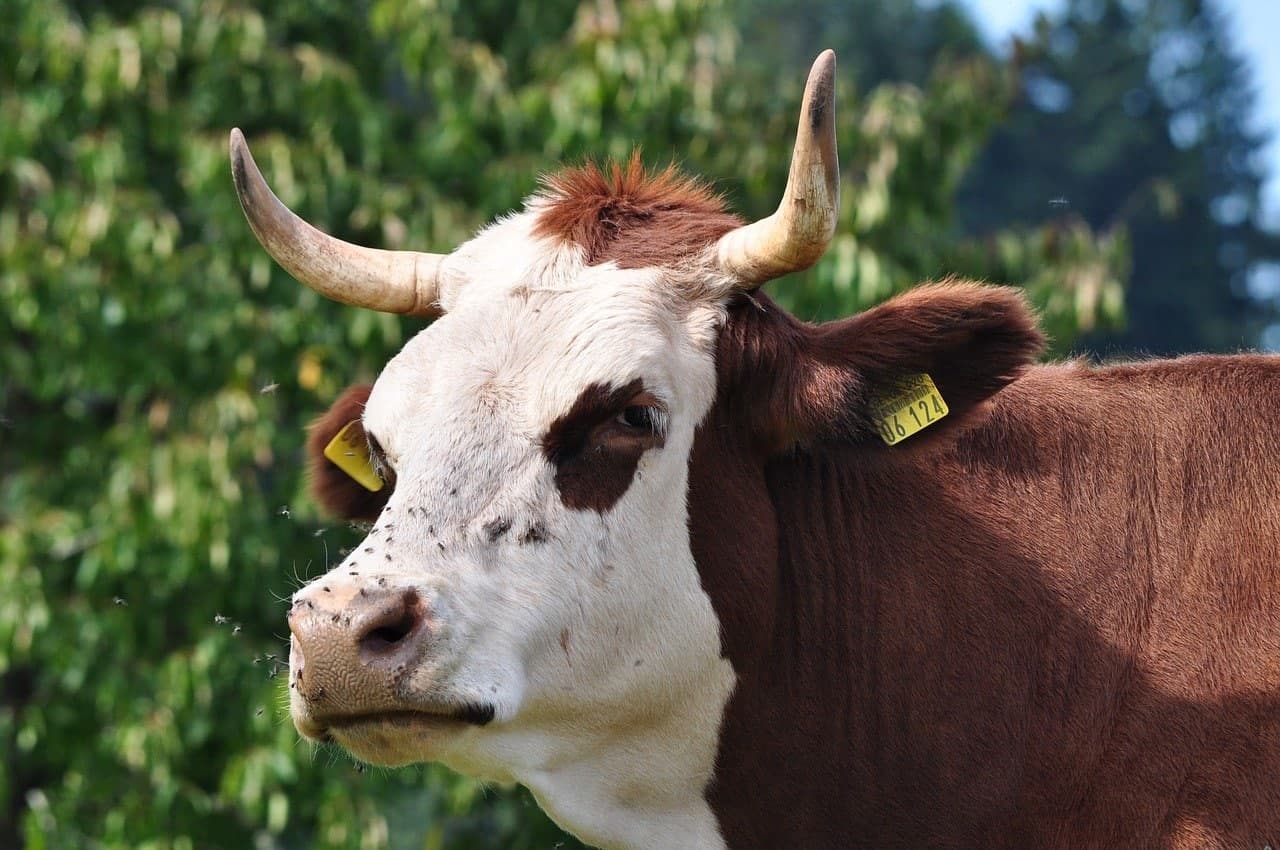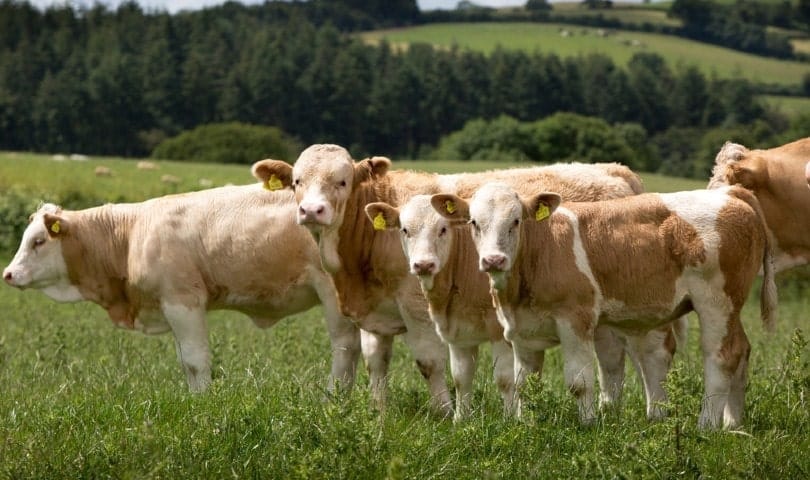Simmental cattle is a Swiss breed that some people also call Swiss Fleckvieh or Pie Rouge. It’s a dual-purpose cow that is an important source of meat and milk in many parts of the world. If you are thinking about getting one of these cows for your farm but would like to learn more about it first, keep reading while we discuss origins, characteristics, appearance, and more to help you stay informed on this breed.

Quick Facts about Simmental Cattle
| Breed Name: | Simmental |
| Place of Origin: | Europe |
| Uses: | Milk, meat, draught |
| Bull (Male) Size: | 59–62 inches |
| Cow (Female) Size: | 53–59 inches |
| Color: | White and red, gold and white, black |
| Lifespan: | 10–12 years |
| Climate Tolerance: | Not good in extreme cold |
| Care Level: | Moderate |
| Production: | 800–1,000 gallons per lactation (usually 7–10 months) |
Simmental Cattle Origins
The Simmental Cattle started in Europe back in the middle ages1, and experts believe it was the result of crossbreeding German cattle with a smaller Swiss cow in the area of the Simme Valley, which is how it gets its name. Once farmers learned about these dual-purpose cows, they became quite popular, and you can now find them on all six continents, with numbers above 40 million.

Simmental Cattle Characteristics
The Simmental Cattle are large cattle that can weigh more than 2,000 pounds, and they are quite muscular, so many farmers use them as draught animals and have them pull carts and plows. Farmers also enjoy the fast rate at which the calves mature compared to other breeds. They are extremely rugged and can adapt to many habitats except extreme cold. It’s also a popular breed to cross with other breeds2 like the Simbrah, a cross between the Simmental and the Brahman. The Simbrah is a cow more suitable to the southern climate.
Uses
Simmental Cattle typically put out 800 to 1,000 gallons of milk per lactation, and you will likely get even more if you feed them a high-quality diet. It also produces a large amount of salable meat, considering many cows weigh more than 2,000 pounds, and the calves grow quickly, reducing the time you need to wait to start receiving milk.
Appearance & Varieties
The Simmental Cattle is available in several colors, and the appearance can vary depending on where you live. The Simmental Cattle here in the United States are typically solid-colored red or black, but in the UK, they tend to be gold to red and white. The white coloring can be on their head, which can cause glare, and cows with pigment around the eyes tend to have fewer issues with sight. These cows typically stand 53–62 inches tall and weigh between 1,500 and 2,800 pounds, with the bulls being significantly larger than the cows.
Population/Distribution/Habitat
Simmental Cattle are highly adaptable, which is why you can find them on all six continents. It’s the second-largest cow in the world, behind only the Brahman. Experts estimate the number of Simmental Cattle to be higher than 40 million, and it’s more likely to be closer to 60 million. It attends millions of cattle shows worldwide every year, proving that it has the traits many farmers desire.

Are Simmental Cattle Good for Small-Scale Farming?
Yes. The Simmental Cattle produces a large amount of milk and salable meat, making it a great choice for small-scale farming. These cows are also excellent at pulling carts and can be helpful on the farm as draught animals. These cows also have a long lifespan, and some might live as long as15 years if you care for them properly.

Summary
Simmental Cattle are an excellent choice for both large and small farms. They provide the owner with plenty of milk and meat and are quite useful as a draught cow during downtimes. The calves grow quickly and have a long lifespan, all qualities that should make any farmer happy.
- Next on your reading list: How Many Cows Are in Wisconsin?
Featured Image Credit: Richard_Hodgson_Photo, Shutterstock
